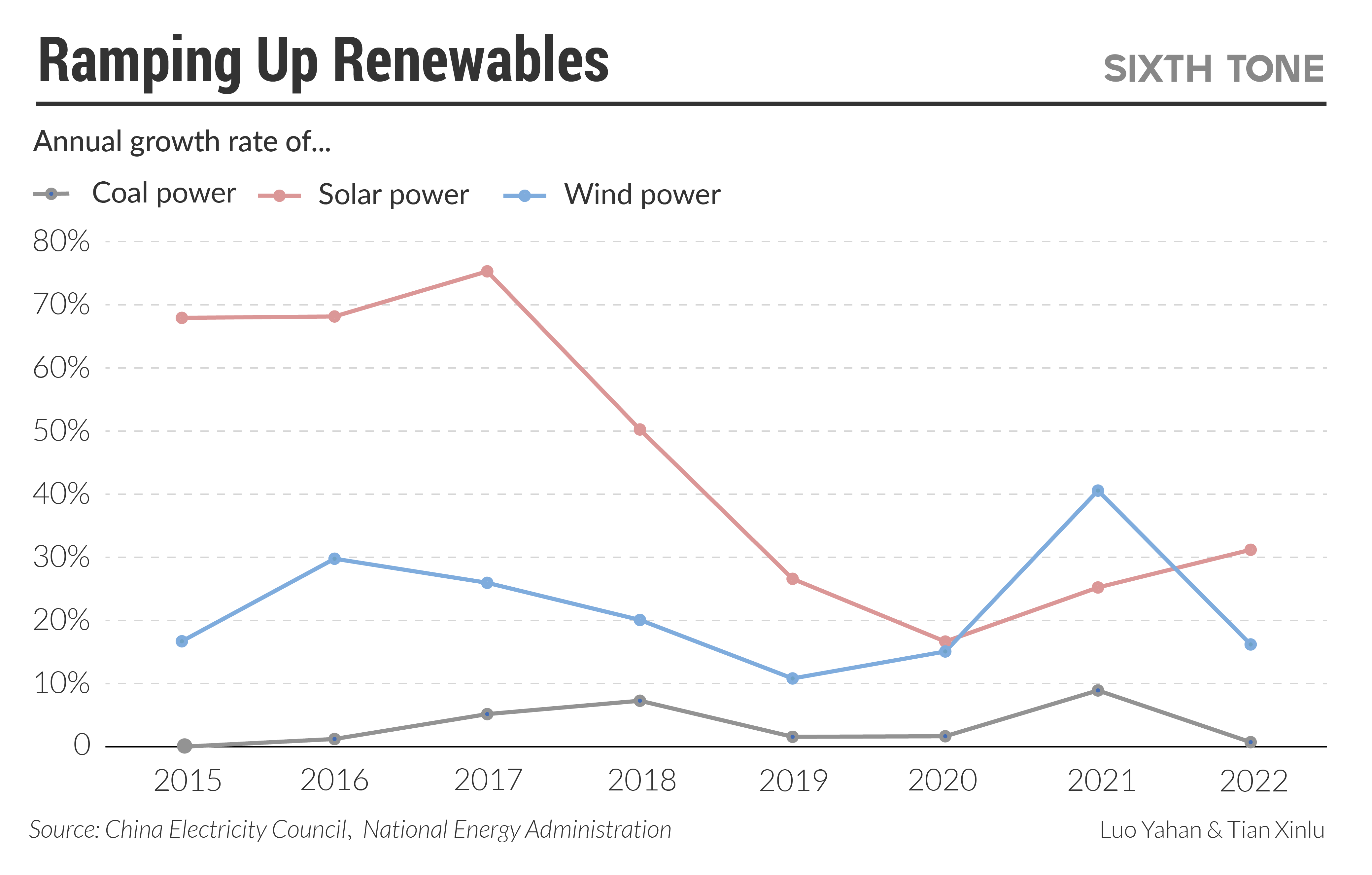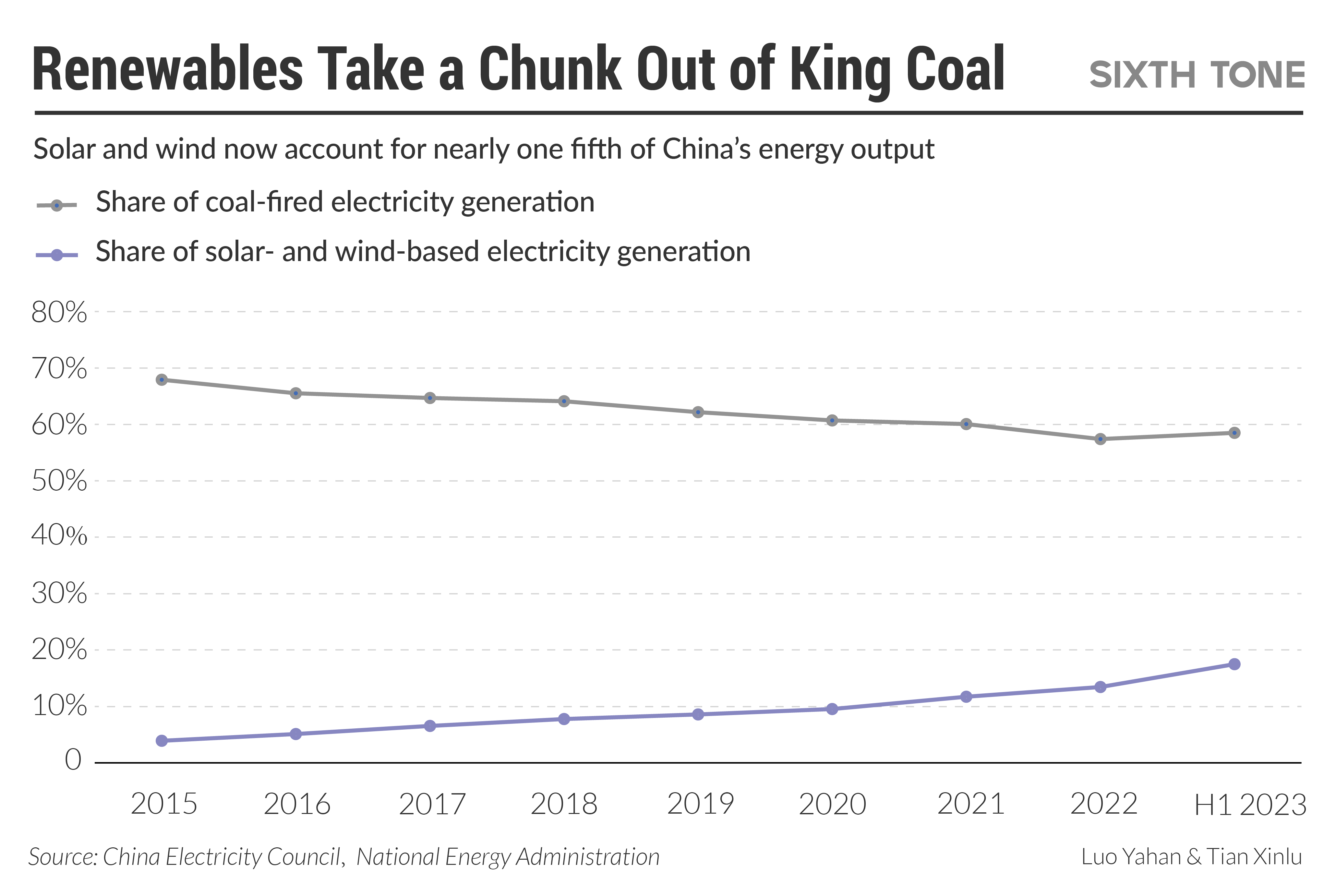
What Did 2023 Bring for China’s Energy Sector?
Caution was the watchword as world leaders converged on Dubai last week to kick off the 28th United Nations Climate Change Conference, better known as COP28. The good news is that the first few days of the conference have already yielded real results: Almost 120 countries have signed on to a pledge to triple the world’s renewable energy capacity by 2030 and 50 of the world’s largest oil companies promised to reach near-zero methane emissions, also by 2030.
The bad news is that debates over the fate of fossil fuels continue to drag on. The latest proposed terms range from a “phaseout” or “phasedown” of fossil fuels to the weaker “a global phaseout of unabated fossil fuels” — a term with no agreed-upon definition.
After committing to significant emissions reduction goals in 2020 — peak emissions by the end of the decade and carbon neutrality by 2060 — 2023 was characterized by a balancing act as the country quickly ramped up renewable energy to meet its targets, even as it remained reliant on the coal sector to maintain grid stability. How it navigates this challenge will go a long way toward determining the eventual success of the world’s fight against climate change.

Burning up
The road to tripling renewable power generation worldwide likely begins with China. After achieving roughly tenfold growth in solar and wind renewables over the past 10 years, China just committed to tripling its output again by 2030. It’s already well ahead of schedule: New adds in solar and wind are so high that it could hit its 1,200 GW target five years early.
Crucially, the problem of renewable energy curtailment — wasted production due to the fluctuating nature of renewables — that was once such an obstacle to China’s clean energy plans has become a nonissue. The usage rate of wind and solar has held stable at 96% and 98%, respectively, since 2019, thanks in part to the nation’s massive investment in grid infrastructure and new purchase incentives.
The flip side of this is that, after a series of domestic power shortages in late 2021 and volatility in Europe’s gas supply caused concerns about energy security, there has been a rise in coal-fired power plant construction in China. From 2022 onwards, China’s energy policy has been defined by the idea that carbon neutrality can only be achieved by “first building up, then breaking through” (xian li hou po).
Central to this approach is the belief that energy transformation is about addition, not subtraction, and that fossil and non-fossil energy sources can be coordinated and complementary. This, some experts argue, will enable China to guarantee energy security in the face of geopolitical tensions and uncertainty.
In other words, a cap on coal power capacity appears to be off the table for the moment. The challenge facing China’s coal fleet is how to reduce coal consumption in the near term while keeping a massive coal fleet viable as a hedge against future uncertainty.

Delayed, not abandoned
Thanks to the massive growth in China’s renewables sector, the country may peak its emissions prior to 2030.
The signals suggest that, rather than abandon its goals, China is adjusting its approach to focus on reducing carbon emissions, rather than energy consumption. In the joint Sino-American Sunnylands statement, China committed to “anticipate post-peaking meaningful absolute power sector emission reduction for the critical decade of 2020s.”
This not only suggests an increasing confidence in the power sector’s ability to peak emissions early, but also a growing belief that China will turn its power sector’s emission trajectory downward before the end of the decade. (One independent analysis found that China’s coal usage may peak as soon as this year.)
Despite the surge in clean energy, China still sees a need for coal-fired power to secure its energy supply. The earlier it develops a mature solution to reduce this reliance, the sooner it can avoid wasteful investments, strengthen its clean energy market, and transform its energy sector.
Cai Liping contributed to the article.
(Header image: A wind power plant in Bozhou, Anhui province, March 2023. Zhang Yanlin/IC)











